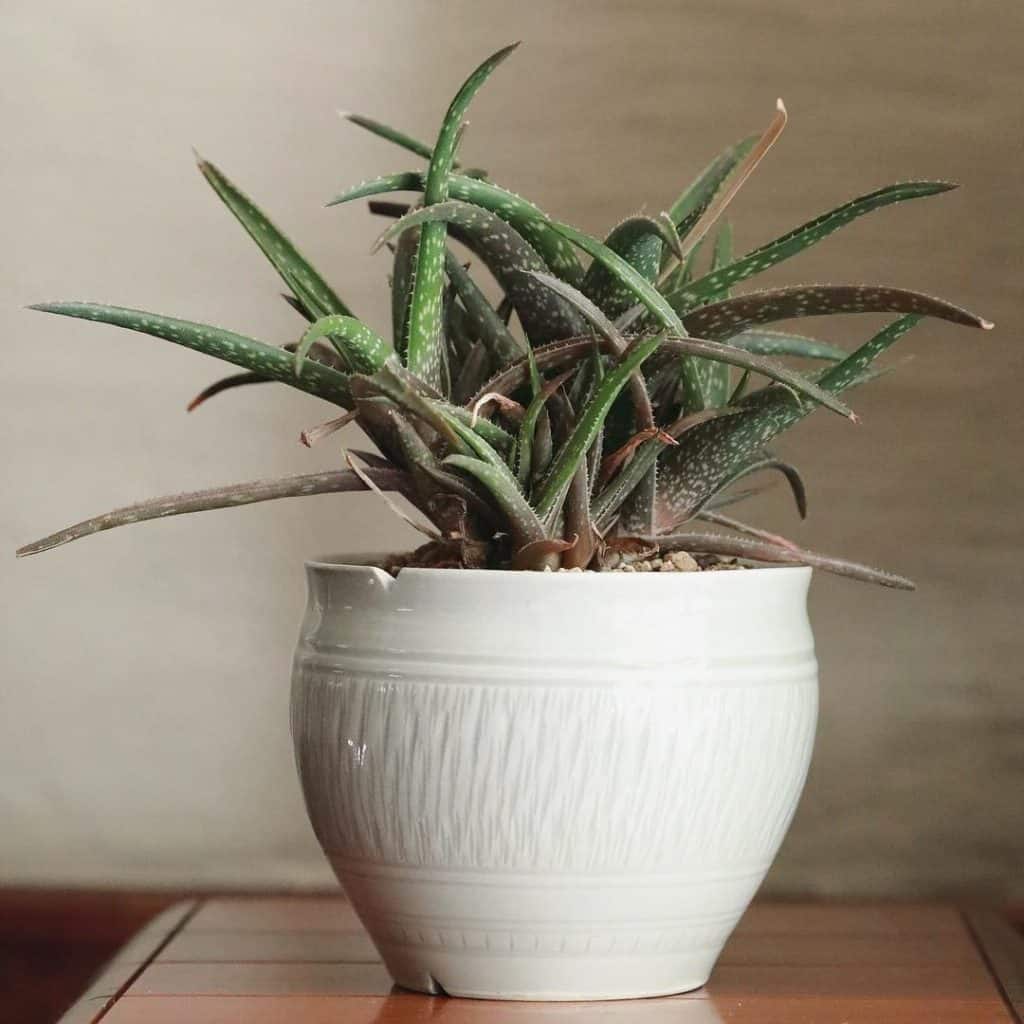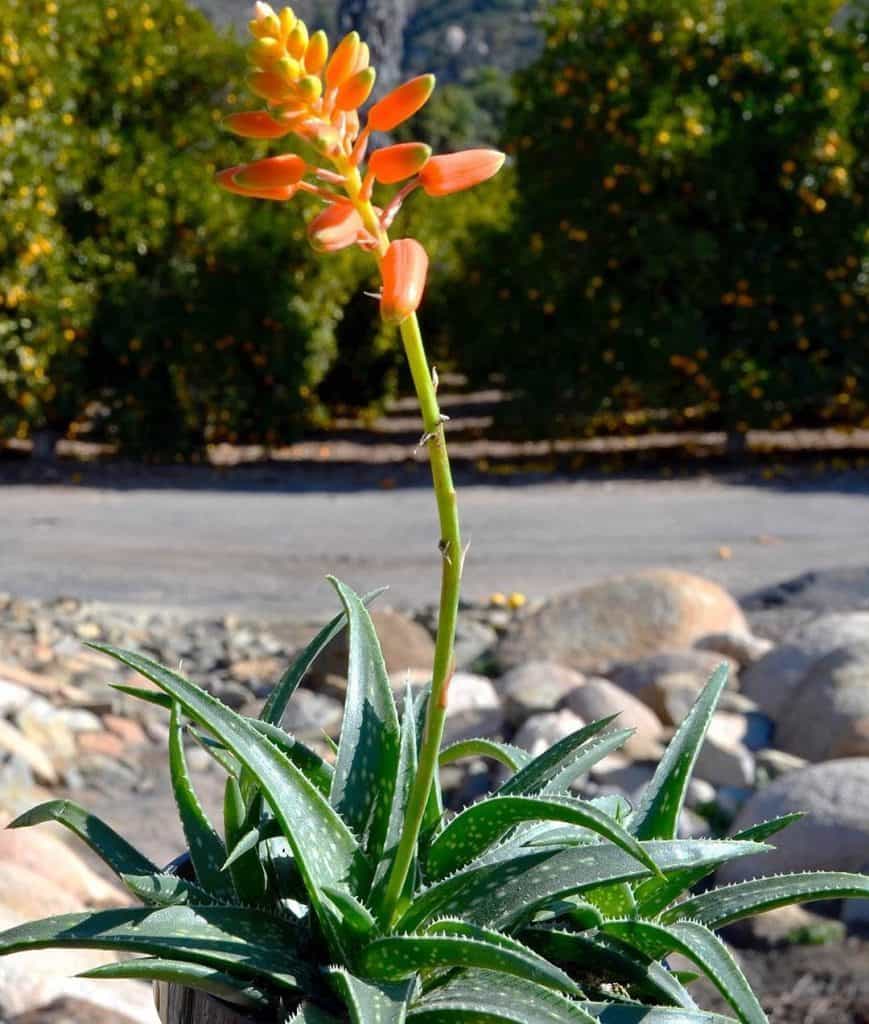Aloe Firebird: Characteristics and Care
You’ve heard of aloe vera, the go-to plant for soothing burns and skincare. But have you met its petite, speckled cousin – the Aloe Firebird? This succulent sensation is taking over gardens with its adorable rosettes and vibrant blooms. Get ready to be dazzled by this low-maintenance, high-impact plant!

Contents
About Aloe Firebird
The Aloe Firebird is a hybrid succulent that defies expectations. Its loosely arranged rosettes are covered in green leaves speckled with white dots, like a miniature aloe vera on steroids. But don’t let its small stature fool you – this plant is a ground-covering champ, spreading outwards instead of upwards.
When it blooms, the Firebird truly lives up to its name. A thick, green inflorescence emerges from the center, bearing bright red flowers that start as yellow buds. The vivid colors create an eye-catching contrast against the green leaves, making this plant a showstopper in any garden.

Related Post:
40+ Interesting Types of Aloe Plants with Pictures
How to Care for Aloe Firebird
Light
The Aloe Firebird thrives in bright, direct sunlight but appreciates some afternoon shade in hot climates. If you’re growing it indoors, place it near a sunny window or use a grow light to mimic its sun-loving nature.
Water
Like most succulents, the Firebird prefers a “soak and dry” watering routine. Water thoroughly when the soil is completely dry, about every 2-3 weeks. Adjust as needed based on your climate and the plant’s growth.
Soil
This beauty requires well-draining soil to prevent root rot. Choose a cactus or succulent mix, or create your own blend with plenty of gritty materials like coarse sand or perlite.

Fertilizer
During the growing season, feed your Firebird with a balanced, water-soluble fertilizer every 4-6 weeks. Look for one specifically formulated for succulents.
Temperature and Humidity
The Aloe Firebird is hardy in USDA zones 9b through 11, thriving in warm temperatures between 65-80°F (18-27°C). It cannot tolerate freezing temperatures, so if you live in a colder climate, it’s best to grow this succulent in a container that can be brought indoors during winter.
The Firebird prefers dry air and doesn’t appreciate excessive humidity. High humidity combined with low temperatures can lead to problems like root rot or fungal diseases. In humid environments, provide extra air circulation around the plant and be cautious about overwatering.

Pests and Problems
Generally pest-free, but keep an eye out for mealybugs, aphids, or spider mites. Overwatering can lead to root rot, so let the soil dry out between waterings.
Pruning
Regular pruning isn’t necessary, but you can remove any damaged or discolored leaves to maintain its tidy appearance.
Potting and Repotting
Choose a well-draining pot with drainage holes, and repot every 2-3 years or when the plant becomes rootbound.

How To Propagate Aloe Firebird
The Aloe Firebird can be propagated from offsets (pups) or seeds, allowing you to multiply your collection effortlessly.
Offsets:
- Gently separate offsets from the parent plant, ensuring they have roots.
- Allow the offsets to callous over for a few days in a shaded area.
- Plant the offsets in a well-draining succulent mix and water when the soil is dry.
- Once established, you can transplant or gift your new Firebirds!
Seeds:
- Sow seeds in a well-draining seed-starting mix.
- Cover the pot with plastic to retain moisture and place in a warm, bright location.
- Remove the plastic once seedlings emerge, usually within a month.
- Transplant the seedlings into individual pots once they have a few sets of true leaves.
With its charming appearance, easy care, and prolific nature, the Aloe Firebird is a must-have for any succulent enthusiast or gardener looking to add a touch of fire to their outdoor (or indoor) oasis.
